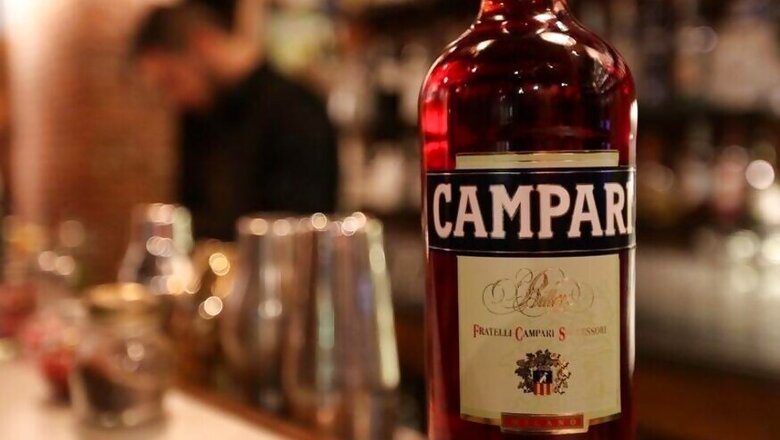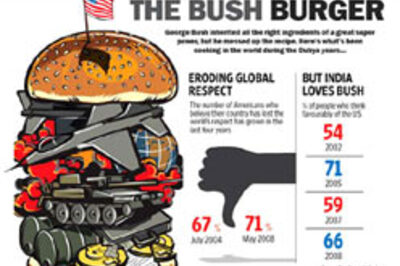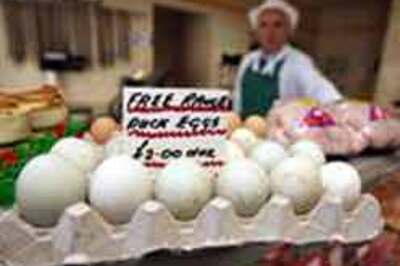
views
 Wherever you sit in a bar, you cannot hoodwink the luscious red beckoning you from the bartender's shelf, like the colour of the lipstick worn by a lady at some party. "What's that?" You ask a bearer when curiosity finally gets the better of you.
Wherever you sit in a bar, you cannot hoodwink the luscious red beckoning you from the bartender's shelf, like the colour of the lipstick worn by a lady at some party. "What's that?" You ask a bearer when curiosity finally gets the better of you.
The name is Campari.
Invented in the 19th century by an Italian named Gaspare Campari, it is one of the most famous aperitif in the world of spirits. The dark red concoction is made with an assortment of herbs infused in alcohol, but beyond that it is dark terrain, for the secret of their names and their combination are still hidden even after 150 years.
Born in the small town of Cassolnovo in Lombardy, Gaspare Campari was the tenth child of a farmer. As a boy, he began working as a waiter and dishwasher toiling away in different restaurants in Milan and had an interest in the world of liqueurs.
When Gaspare got married, he set up a Cafe in the west of Milan. However, he was not someone who would settle down with an ordinary life. During his free time, he went down to his cellar to mix up liquids to see how liqueurs could be fashioned up from scratch.
Whatever struck his fancy - Cocoa, vanilla, raspberry - he tossed into the cauldron to see what would come out of it. The customers who dedicatedly visited his Cafe knew for sure that he would always emerge from the cellar with something new and interesting.
One day, Gaspare brought to his customers a new drink - Bitter all'Uso d'Holanda - the Dutch bitters that took his patrons off their feet. Finetuning it, in 1860 he settled on the recipe that would become the phenomenal Campari bitter.
When his wife died, Gaspare moved to Milan, where he got married again and purchased a bar named Amicizia. Though he presented all his fares in the new establishment too, it was his Campari bitter that became instantly popular.
When Gaspare died in 1882, his son Davide inherited his business and was known to be an astute businessman.
After taking over his father's business, Davide sensed the potential of Campari pushing its borders beyond the country to foreign lands. He established export markets to wherever he travelled.
He also knew Campari would perform in the evolving world of cocktails. 'Americano,' a new sensation among American tourists (hence the name) was thus born when Campari was poured into sweet vermouth and soda.
But when in 1920, Count Camillo Negroni came to Florence, he was already a little tired with all that Americano that he had drunk in Italy. He asked about the choices he had of replacing soda with besides Americano. Gin was poured into his mix of campari and vermouth and therefore, a new sensation was born in the word of cocktail - Negroni, after the name of the Count who was bored with Americano.
In 1932, Campari soda, the first packaged cocktail mix was marketed by Davide Campari.
Davide also knew the importance of yoking his drink with the world of art. Between the 1920s and the 1940s some of the greatest artists of the time were employed by him to produce works that promoted the drink.
One of the iconic word art pieces titled 'Declinazione grafica del nome Campari’ was posted inside Metro stations for the opening of Milan's Metro line M1. Daivde also sought the help of leading filmmakers of the time to make commercials for the drink. Thus, legendary filmmaker, Federico Fellini shot his first commercial featuring the aperitif. The Campari calendar, released in early 21st century, featured actors such as Penelope Cruz and Uma Thurman.
What is the secret of Campari's success?
Right from the beginning, makers of Campari have kept things under the cover. Beyond alcohol, sugar syrup, and distilled flower even connoisseurs know very little. Many believe that they source herbs from exotic locations and bring them straight to the director's office in different brown packets. However, only a few in the distillery know the details of the proportion.
From where does it get its red colour?
As unpleasant as it may sound but originally the red colour came from cochineal dye, which is made from the crushed bodies of dried cochineal insects. However, at the beginning of the 20th century, the company wanted their business to be politically correct and sensibly replaced the insects with an artificial dye.
Note: Campari bitter is an acquired taste.




















Comments
0 comment